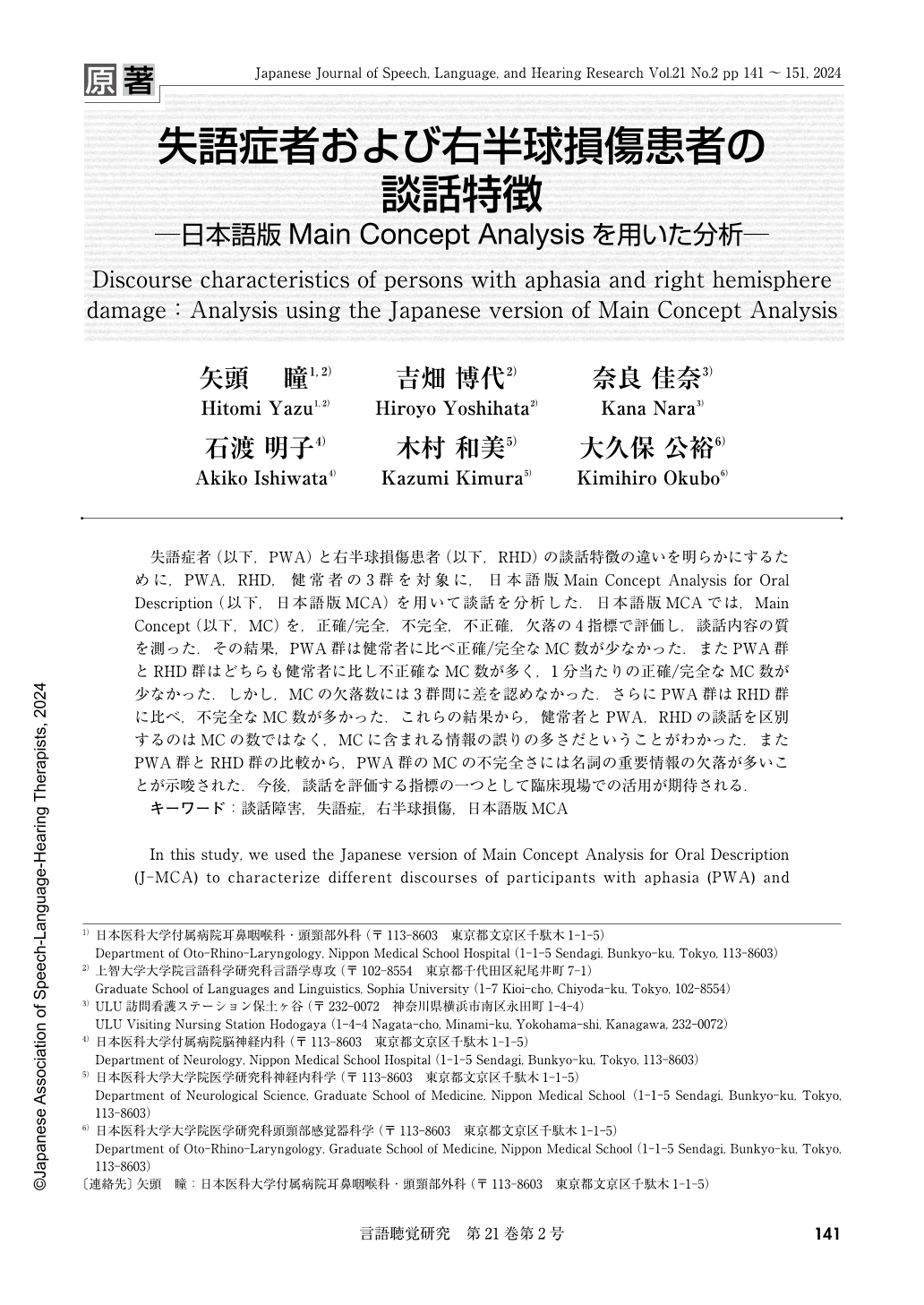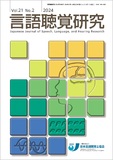Japanese
English
- 有料閲覧
- Abstract 文献概要
- 1ページ目 Look Inside
- 参考文献 Reference
失語症者(以下,PWA)と右半球損傷患者(以下,RHD)の談話特徴の違いを明らかにするために,PWA,RHD,健常者の3群を対象に,日本語版Main Concept Analysis for Oral Description(以下,日本語版MCA)を用いて談話を分析した.日本語版MCAでは,Main Concept(以下,MC)を,正確/完全,不完全,不正確,欠落の4指標で評価し,談話内容の質を測った.その結果,PWA群は健常者に比べ正確/完全なMC数が少なかった.またPWA群とRHD群はどちらも健常者に比し不正確なMC数が多く,1分当たりの正確/完全なMC数が少なかった.しかし,MCの欠落数には3群間に差を認めなかった.さらにPWA群はRHD群に比べ,不完全なMC数が多かった.これらの結果から,健常者とPWA,RHDの談話を区別するのはMCの数ではなく,MCに含まれる情報の誤りの多さだということがわかった.またPWA群とRHD群の比較から,PWA群のMCの不完全さには名詞の重要情報の欠落が多いことが示唆された.今後,談話を評価する指標の一つとして臨床現場での活用が期待される.
In this study, we used the Japanese version of Main Concept Analysis for Oral Description (J-MCA) to characterize different discourses of participants with aphasia (PWA) and participants with right hemisphere damage (RHD). J-MCA measures the quality of discourse content using the accuracy and completeness of the Main Concept (MC). MCs are evaluated using four indices:Accurate and Complete (AC), Accurate but Incomplete (AI), Inaccurate (IN), and Absent (AB). As a result, PWA had lower number of AC than healthy participants (HP). In both groups, the number of IN was higher than HP, and the number of AC per minute was lower. PWA had a higher number of AI than RHD. However, there was no difference in the AB count between the three groups. These results indicate that it is not the number of MCs that distinguishes the discourse of HP from that of PWA and RHD, but the amount of incorrect information contained in the MCs. The comparison between PWA and RHD suggested that AI produced by PWA was often due to the lack of important information in nouns. We expect that J-MCA will be used in clinical practice as one of the indices to evaluate discourse.

Copyright © 2024, Japanese Association of Speech-Language-Hearing Therapists. All rights reserved.


